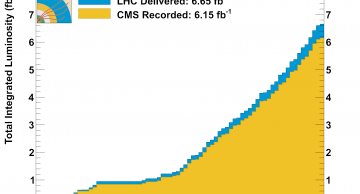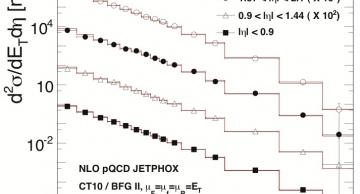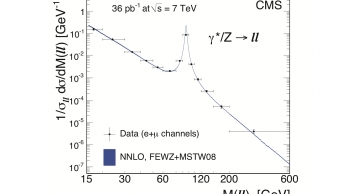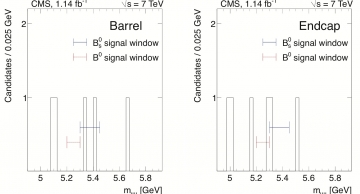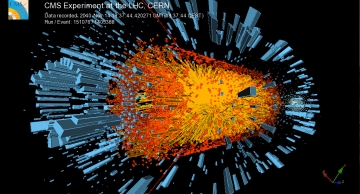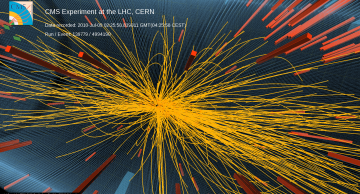In 2011, CMS presented early evidence that Upsilon (Υ) particles produced in lead-lead collisions “melt” as a consequence of interacting with the hot nuclear matter created in these heavy-ion interactions. CMS has since updated and extended this…
The LHC began its 2012 run in early April, colliding protons at a world-record centre-of-mass energy of 8 TeV[1]. In just over two months, CMS has recorded more data than in the 2011 run. As of the short technical stop starting June 18, the LHC…
At about half-past five in the evening on Sunday, 30th October, an e-mail from Run Coordination to the CMS collaboration said:
At 17:00 today the LHC dumped the last proton beams for the year to start the machine development period and to prepare…
Read the paper: EXO-11-005
In this Letter, CMS describes a search for a kind of fourth-generation T quark with charge 2/3. The search for T-antiT pairs was performed in events that had a pair of oppositely charged leptons (l+l−) as well as an…
Read the paper: SUS-11-003
The analysis shows no excess of events over the Standard Model expectations. As a result, exclusion limits were placed on searches for squarks and gluinos in the Constrained Minimal Supersymmetric extension of the Standard…
Read the paper: TOP-11-003
The measured production rates of Top-antiTop pairs, where one lepton and four jets of particles is observed in the final state, show good agreement with Quantum Chromodynamics (QCD), the theory of the strong interaction.…
Read the paper: QCD-10-037
This paper extends CMS’s previous measurements of the production rates of isolated prompt photons. The production rates agree with the predictions of perturbative Quantum Chromodynamics (pQCD), although, at low transverse…
Read the paper: QCD-10-037
The measured Drell-Yan production rates, normalised to the production rates in the Z-boson region, show good agreement with the theoretical predictions.
The Drell-Yan process occurs when a quark from one of the colliding…
Read the paper: BPH-11-002
The observed numbers of events in both decay modes are consistent with those expected in the Standard Model.
Upper limits on the branching fraction have been determined at 90% and 95% confidence levels (CL).
The Standard…
In our Universe today, quarks are always bound together by gluons to form "composite" particles such as protons and neutrons. The Quark-Gluon Plasma, or QGP, often described as a soup-like medium, is a hot, dense state in which these quarks and…
The CMS experiment at CERN's Large Hadron Collider (LHC) has completed a search for microscopic black holes produced in high-energy proton-proton collisions. No evidence for their production was found and their production has been excluded up to a…
The CMS Collaboration at CERN released today a paper entitled "Observation of Long-Range Near-Side Angular Correlations in Proton-Proton Collisions" that details signs of a new phenomenon in proton interactions.
A study of "high multiplicity"…
Pagination
- Previous page
- Current page 1
- Page 2
- Next page


